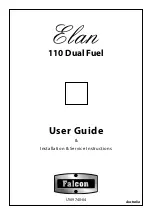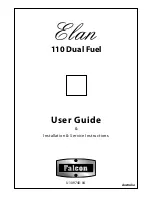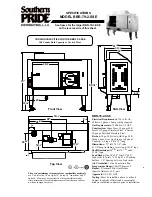
TESTING AND COMMISSIONING
CO ALARM
LEAVE INSTRUCTIONS FOR
FUTURE USE
7
The handrail brackets are held on the front end of the
cooker top-plate casting. Remove the travel nuts and
replace with the handrail brackets ensuring the fibre
protecting washers are in position. Insert the handrail
with fitted endcaps into the brackets, positioning them
correctly and tighten the locating bolts. (Fig. 7).
After completing the installation, the Heating Contractor
should demonstrate to the user, the operation of the
appliance and the routine flue cleaning method.
(i)
Check that the system is full of water and free from
air locks.
(ii) When lighting pull the flue chamber damper open to
maximum.
(iii) Add paper and sticks with a small quantity of fuel
through fuelling aperture onto bottomgrate and
close the firebox door.
(iv) Open ashpit door, ignite fuel; and close the ashpit
door when fuel is well alight with spinwheel on
ashpit door at required setting.
(v) Allow the cooker to heat up gradually at first time
lighting.
NOTE: SMOKE/SMELL EMITTED DURING INITIAL
USAGE
Some parts of the cooker have been coated with a light
covering of protective oil. During initial operation of the
cooker, this may cause smoke/smell to be emitted and is
normal and not a fault with the appliance. It is therefore
advisable to open doors and or windows to allow for
ventilation.
Lift the lids to prevent staining the linings.
Building regulations require that when ever a new or
replacement fixed solid fuel or wood/biomass appliance
is installed in a dwelling a carbon monoxide alarm must
be fitted in the same room as the appliance. Further
guidance on the installation of the carbon monoxide
alarm is available in BS EN 50292:2002 and from the
alarm manufacturer’s instructions. Provision of an alarm
must not be considered a substitute for either installing
the appliance correctly or ensuring regular servicing and
maintenance of the appliance and chimney system.








































